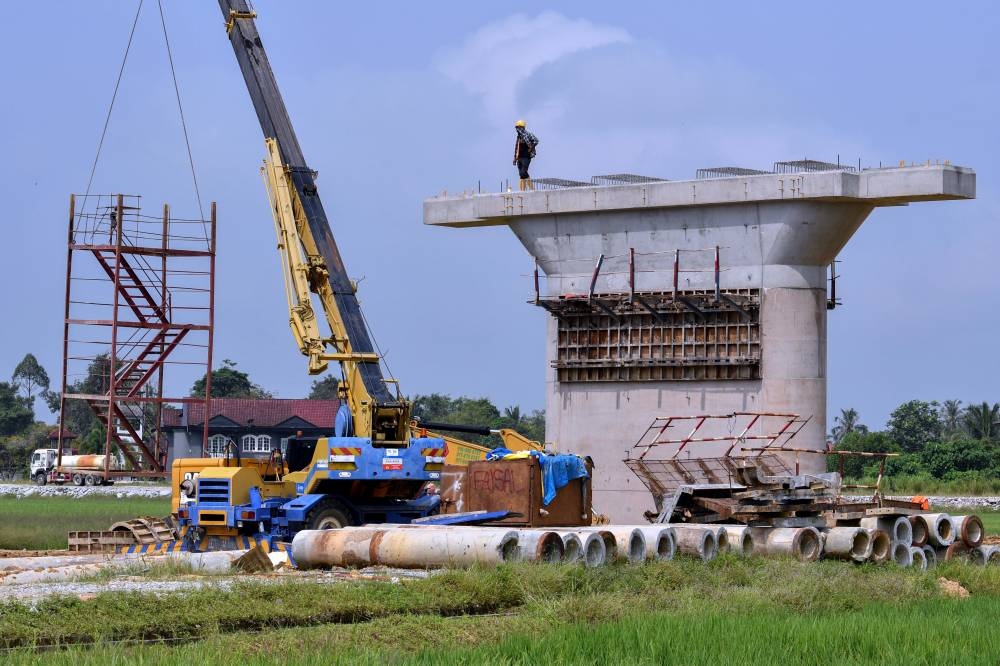'Wall of silence' over local employment at ECRL?
SAMIRUL ARIFF OTHMAN21 Mar 2023 05:16pm

ECRL construction work being done in Kota Bahru -Bernama pic
A
A
A
While our former colonisers had built these initial links, Malaysians from all walks of life were able to find work either as builders, technicians, engineers administrators and in other roles - railways meant jobs and economic prosperity.
With such a history, how is it that the East Coast Rail Line (ECRL) has built tracks in the diametrically opposite direction? The megarailway has proven controversial from the start, initially due to concerns over environmental impact.
But we were told that the ECRL would bring massive benefits to Malaysia in terms of infrastructure progress, economic prosperity and most importantly in job creation for tens of thousands of Malaysians and would help the country become a regional hub for the railway industry.
For those still unaware, the ECRL 665-km ECRL is jointly developed by Malaysia Rail Link, a wholly-owned subsidiary of Malaysia's Ministry of Finance and owner of the ECRL project and China Communications Construction Company (CCCC).
Its cost has varied but currently stands at RM74.96 billion consisting of construction cost of RM50.27 billion, while other development costs amount to RM24.69 billion, the transport ministry said last December, making it the single most expensive infrastructure project in Malaysia’s history.
From the start there were controversies over the debt Malaysia had to take on and the huge impact it would have on the country’s environment- deforestation, pollution, environmental degradation, fragmentation of the already dwindling range of our wildlife.
But back to jobs. In 2018 MRL assured the public that ECRL would generate a total of 80,000 direct and indirect job opportunities will be offered during the course of the ECRL construction period. It would also boost the local economy by sourcing local material construction materials.
However, seven years after construction, there is little progress in the way of job creation. In fact there is a disturbing “wall of silence” over this issue. There is no readily available information that will clarify this, neither from the Human Resource Ministry nor the builders of the ECRL itself.
What is known is the presence of workers from China who are working on it. Even worse, like many other sectors in Malaysia, the ECRL itself seems to be drawing yet more low-skill workers from Bangladesh and other similar source countries. It would seem that there are more foreign workers than Malaysians working on this project.
One also has to wonder if awarding conciliatory contracts to certain local firms counts as “job creation” and if so how many of those jobs are actually related to the railway industry. It would be embarrassing if it turns out that local participation amounts to little more than catering contracts, cement supplies and sourcing foreign workers.
Unless some serious restructuring is done and a commitment to transparency over the ECRL’s workforce is provided, Malaysia will be stuck with yet another “white elephant” that relies on foreign workers and delivers little to Malaysia other than debts and the loss of wildlife including of course our actual elephants.
Samirul Ariff Othman is a Political Economic & International Relations analyst. He was previously attached to a leading local think tank. The views expressed in this article are the author's own and do not necessarily reflect those of Sinar Daily.














